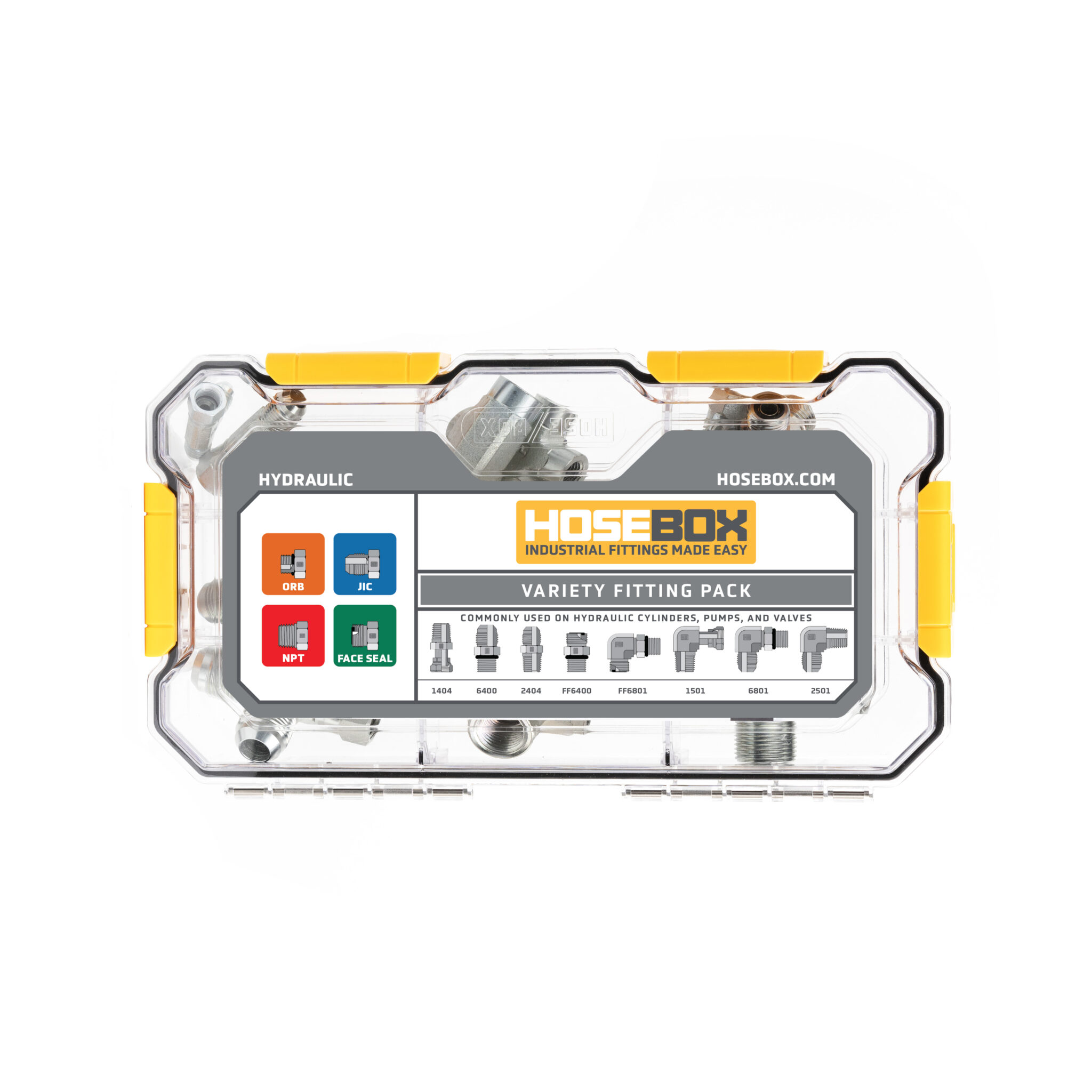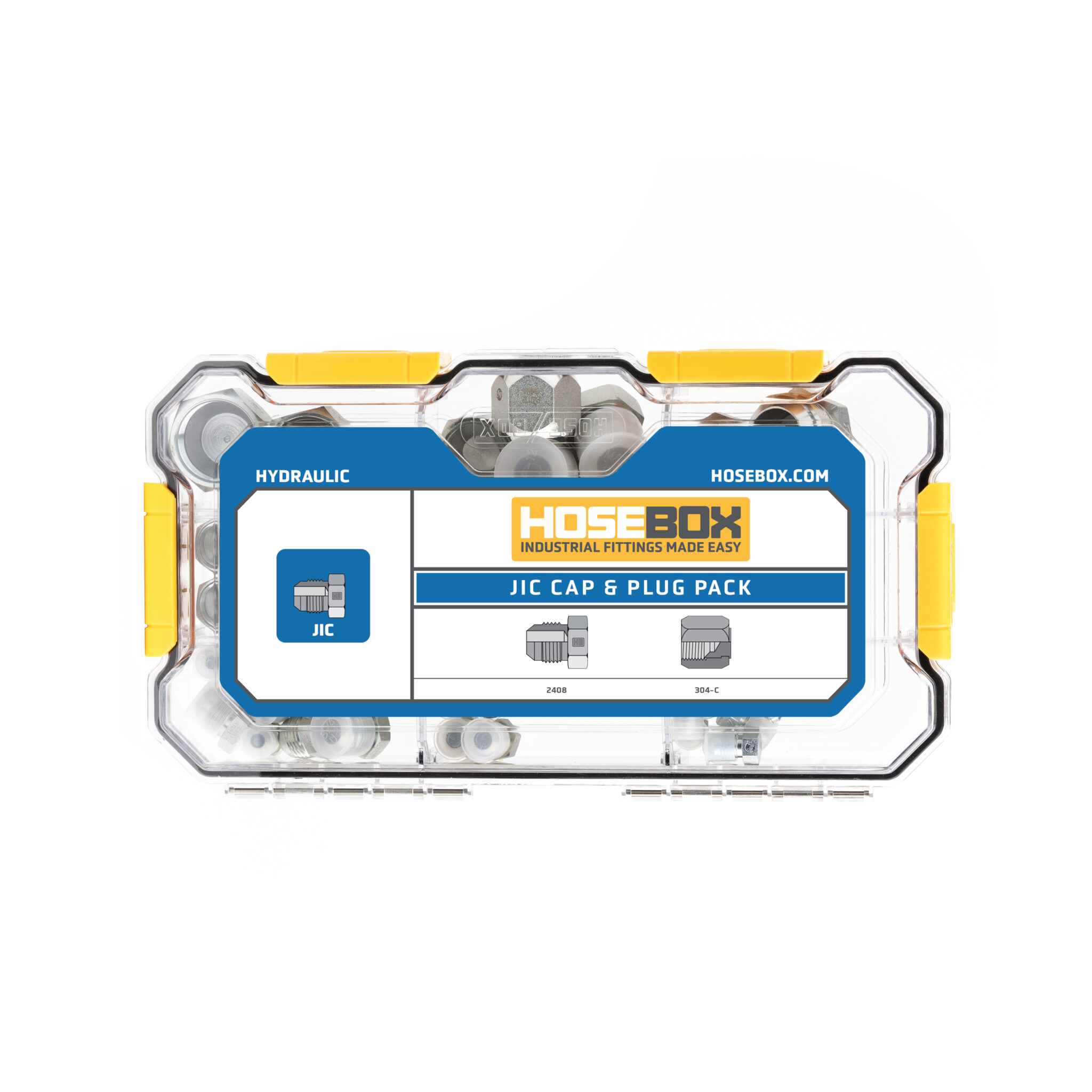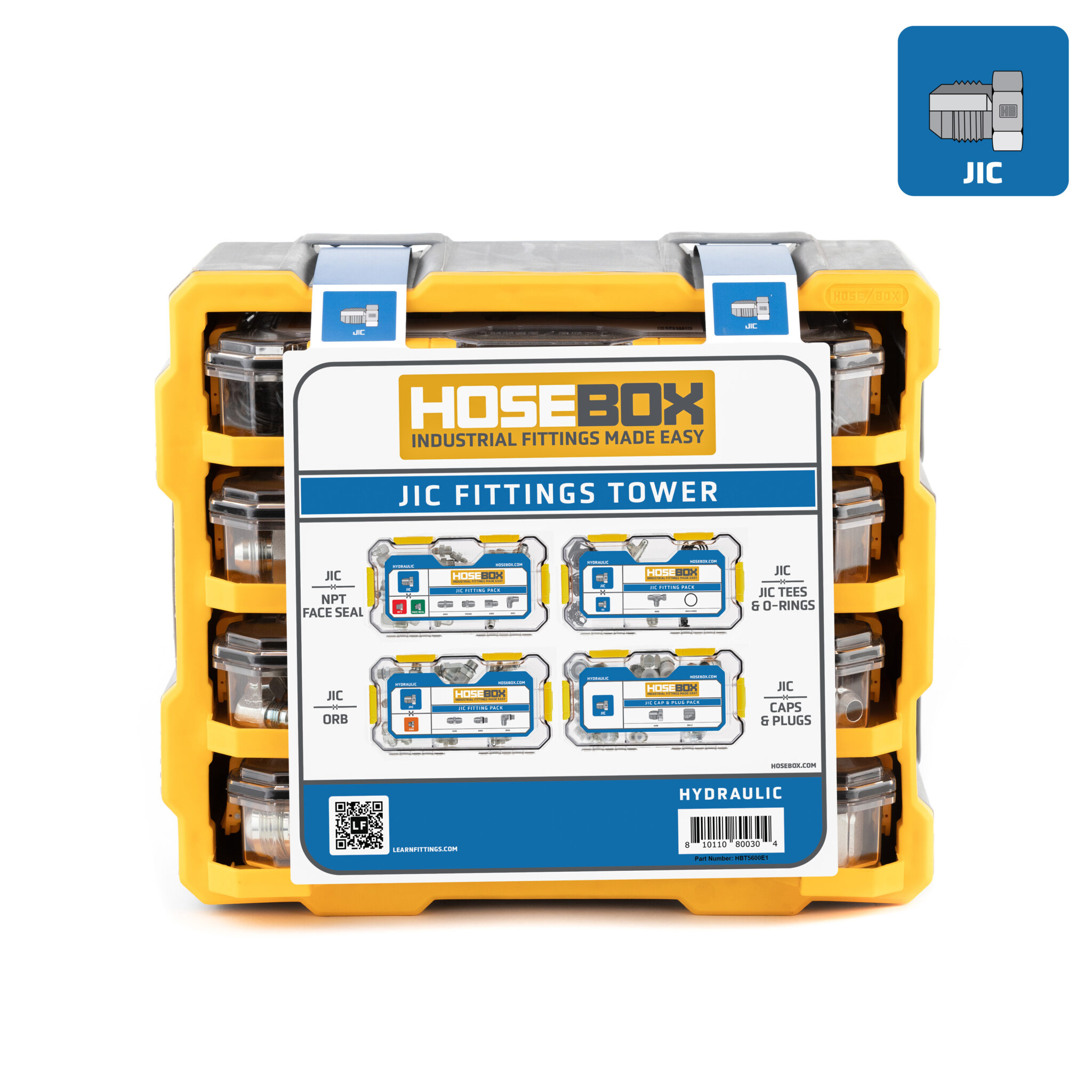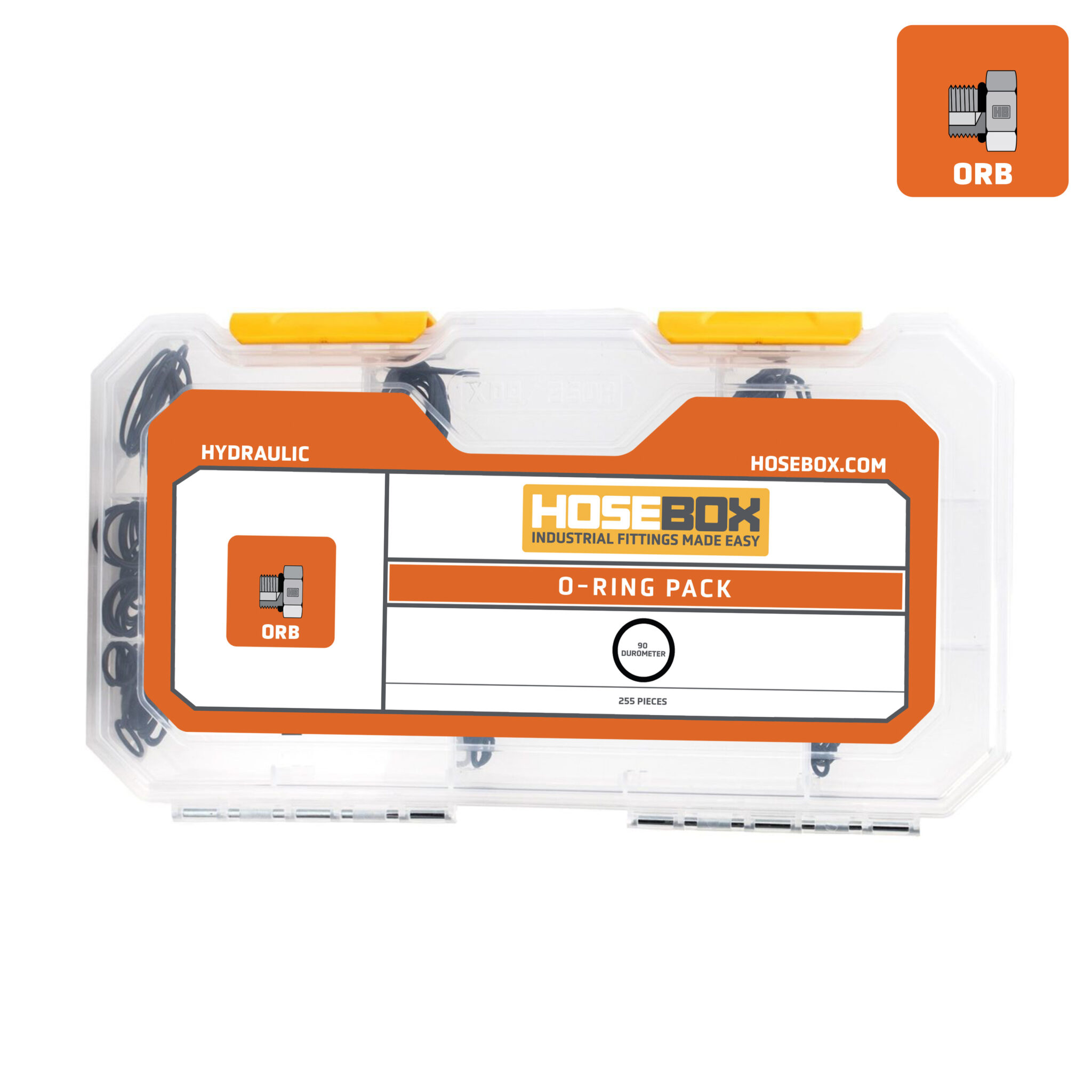Welcome to the bustling world of hydraulic hoses, the unsung heroes powering machines from towering construction cranes to intricate robotic arms. At HoseBox, we’re all about demystifying the often-overlooked hydraulic hose, equipping you with the knowledge to pick the perfect one for your needs.
Need help navigating the hydraulic hose landscape? Our HoseBox experts are just a click away. Ready to explore our diverse range of hydraulic hoses? Jump right in here.
But before you dive in, let’s unravel the mysteries of hydraulic hose selection. In this guide, we’ll explore the ins and outs of hose sizes, lengths, and diameters. Stick with us and you’ll become a hydraulic hose connoisseur in no time!
Buckle up and continue reading for our comprehensive guide to hydraulic hose selection.
Understanding the Basics of Hydraulic Hose Sizing
Let’s kick off our hydraulic hose sizing adventure with a ride down the three-lane highway of hose measurements. That’s right, when it comes to hoses, it’s all about the inner diameter, the outer diameter, and the length. These trio govern how a hose performs and fits into your system.
Now, we know what you’re thinking, “What’s the deal with all these diameters?” Let’s break it down.
Inner Diameter (I.D.)
Picture the inside of a straw, that tunnel where your favorite smoothie travels – that’s like the inner diameter of a hydraulic hose. When the I.D. is too large, your system may act like it just woke up from a nap.
But on the other hand, if the I.D. is too small, your system might work overtime, causing unnecessary pressure drops, leaks, and potentially damaging the system. Remember, like Goldilocks in the three bears’ house, you want the I.D. that’s just right!
Outer Diameter (O.D.)
Now let’s talk about the outer diameter. If the inner diameter is the tunnel through which the fluid moves, then the outer diameter is the actual size of that tunnel. It’s the full size of the hose cross-section, including the tube, the reinforcement, and the cover.
The outer diameter is what you need to match the hose to the right fittings and system components.
Length
Finally, let’s zoom out and talk about the length of the hose. It’s like the distance between two cities – it determines the maximum reach between endpoints. But more length doesn’t always mean better. In fact, a longer hose can increase the pressure drop in the system. Why? Because hose length adds to the head loss due to friction.
The Enigmatic Dash Size
Now, you might have come across a term called the ‘dash size.’ It’s a bit like the secret code of hydraulic hoses! It refers to the I.D. of a hydraulic hose or fitting in 1/16″ increments. So, for instance, a -6 hose would indicate a hose with an I.D. of 6/16″ – or 3/8″.
In essence, understanding the basics of hydraulic hose sizing is a bit like preparing a meal. You need to consider all the ingredients (I.D., O.D., length) and ensure they’re in the right proportions to make your hydraulic system work efficiently and effectively.
Decoding Hydraulic Hose Types and When to Use Them
When you step into the hydraulic hose world, it’s a bit like entering a supermarket of hoses. There’s a wide variety, and each type has a specific purpose and application. Here’s a fun rundown of some common hose types and when you’d use them:
Wire Braid Hoses
Think of wire braid hoses as the reliable, versatile ‘all-rounders’. These hoses have a woven wire reinforcement, making them a great option for medium to high-pressure applications. Picture them as your favorite multi-tool, ready to help out in a wide range of scenarios.
Spiral Hoses
Next on our list are spiral hoses. They’re like the big, tough bodyguards of the hose world. Thanks to their spiral wire reinforcement, they’re capable of withstanding extremely high pressures and severe applications. Remember, when the going gets tough, the tough get spiral hoses!
Thermoplastic Hoses
Then we have thermoplastic hoses, the lightweights of the hose family. Don’t be fooled, though – what they lack in weight, they make up for in flexibility and versatility. They’re easy to work with, perfect for applications that require lightness and flexibility, such as certain machinery and pneumatic applications.
PTFE Hoses
Finally, let’s meet the PTFE (Polytetrafluoroethylene) hoses. They’re a bit like that specialist chef you call on for certain tasks. These hoses are perfect for high-temperature situations and where chemical resistance is needed. In short, they’re the ‘hot and spicy’ specialists of the hose world!
Understanding the different types of hydraulic hoses is like knowing the members of a diverse team. Each brings unique strengths, and choosing the right hose for your application ensures a more efficient and effective system.
Don’t forget to put this guide on how to identify hydraulic hose in your bookmarks for everyday use
The Art of Selecting Hydraulic Hose Length

Imagine the hydraulic hose as the ‘delivery guy’ of your system. It’s responsible for transporting hydraulic fluid efficiently and swiftly from point A to point B. But just as with a real delivery, the distance matters, doesn’t it?
Understanding Hose Length
The length of your hydraulic hose isn’t a case of ‘the longer, the better’ nor is it a ‘one-size-fits-all’ scenario. It’s more like buying jeans – you need the right size for a perfect fit. If your hose is too short, it can cause tension and limit system movement. Too long, and you might face issues with slackness and extra friction.
Considering System Requirements
So, how do you pick the right hose length? Take a good look at your system’s requirements. Consider the distance between your system’s endpoints and the room needed for the system’s mobility and expansion. Sometimes, a little extra hose length is a good idea, but remember, balance is key!
Factoring in Pressure Drops
Don’t forget the pressure drop. The longer the hose, the higher the chance for a pressure drop due to friction. That’s why it’s important to calculate your system’s optimal hose length, ensuring your hydraulic fluid delivery is as efficient as possible.
Selecting the right hose length is much like finding the perfect pair of jeans. Once you’ve found the right fit, everything just works better!
What’s the Deal with Dash Sizes?
If you’ve ever felt like you’ve stumbled onto a secret code when trying to understand hydraulic hose sizing, you’re not alone. That’s where dash sizes come into play. They’re the “code” used to denote hose sizes. Sounds intriguing, right?
Dash Sizes Unveiled
You’ve probably noticed dash sizes when browsing for hydraulic hoses and wondered what they mean. Simply put, a dash size refers to the inner diameter of a hydraulic hose or fitting in 1/16″ increments. For example, a -6 hose indicates a hose with an I.D. of 6/16″ – or 3/8″. It’s almost like secret agent stuff, except it’s for hydraulic hoses.
The Dash Size Distinction
Just remember this – when it comes to hoses, we’re talking about inside diameters. On the flip side, tubes are measured by outside diameter. Hence, this is how hoses and tubes are differentiated. This might seem like a small detail, but in the hydraulic world, it’s a pretty big deal!
With a better understanding of dash sizes, you’re now one step closer to being a hydraulic hose sizing guru. And if you think this information is useful, wait until you see what we have lined up next!
Hydraulic Hose Length and Its Implications
After we’ve conquered the world of diameters, let’s move onto another crucial aspect of hose sizing – length. When it comes to hydraulic hose length, things can get a little stretchy, both literally and figuratively.
The Reach of the Hose
The length of the hydraulic hose defines its maximum reach between endpoints. It’s kind of like how far you can reach to grab that last slice of pizza at the dinner table.
Length and Pressure Drop
But be warned! Increasing length isn’t always a good thing. It can increase the pressure drop in the system because hose length is a function of head loss due to friction. So, it’s a bit like a trade-off — longer reach, but potentially less performance.
Now that we’ve got the basics covered, you might be thinking, “Great, I can choose the right hydraulic hose now!” But wait, there’s more to this story!
Decoding the Dash Size in Hydraulic Hoses
Now, let’s get to the crux of the matter. If you’re looking at a hydraulic hose specification and you see a number preceded by a dash, you’re looking at the dash size.
The Meaning of Dash Size
Let’s put it simply. A dash size refers to an I.D. (inner diameter) of a hydraulic hose or fitting in 1/16″ increments. It’s a shorthand that tells us the size of the hose quickly. For instance, a -6 hose would indicate a hose with an I.D. of 6/16″ – or 3/8″. It’s like a code that’s super easy to crack once you know the rules!
Hose and Tube Measurements
There’s a fascinating aspect of hydraulic hoses and tubes that’s worth mentioning here. Hoses are measured by inside diameter, whereas tubes are measured by outside diameter. This difference is crucial in distinguishing between the two.
And there you have it, folks! You’re now well-versed in the art of hydraulic hose sizing. With this newfound knowledge, you’re all set to pick the perfect hose for your needs.
Conclusion: The Art of Choosing the Right Hydraulic Hose Size
Alright, now you’re no longer a rookie when it comes to hydraulic hose sizing. You’ve gained a valuable insight into this somewhat technical world, understanding how to translate measurements into practical applications. But remember, it’s not just about getting the numbers right; it’s also about maintaining system efficiency and protecting your equipment.
Whether you’re a seasoned hydraulic system manager or just dipping your toes into the hydraulics world, our comprehensive guide, top-notch products, and knowledgeable customer support can be your best friends. At HoseBox, we’re all about taking complexity out of the equation and offering a smooth experience for our customers. Happy Hydraulics!





